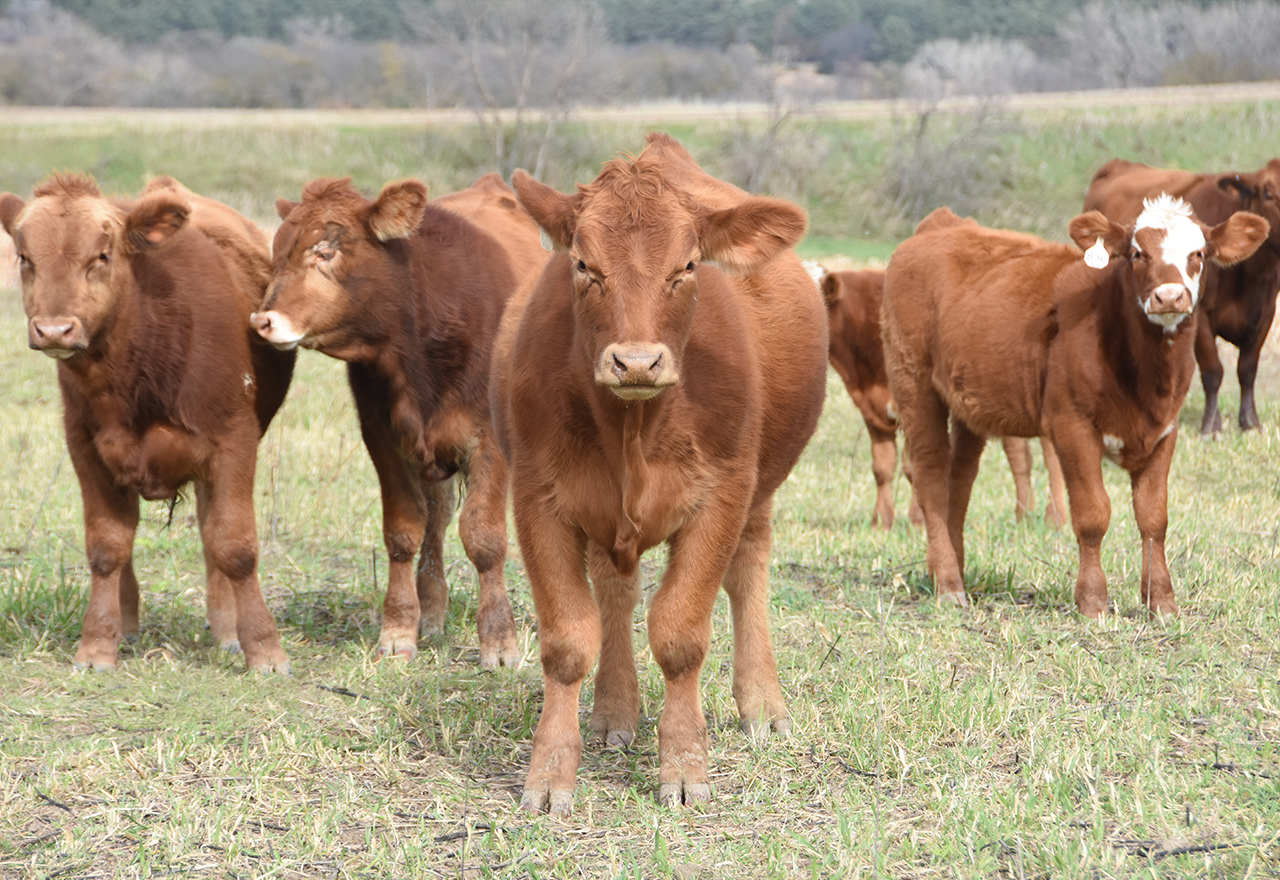The future of cattle lies in its genetic diversity
By Marianne Landzettel
Ninety-nine percent of the roughly nine million Holstein dairy cows in the US can be traced back to two bulls that were born in the ‘60s, according to researchers at Pennsylvania State University.
Synonymous with milk, the Holstein is favored for its “high performance,” or high milk yields. The flipside of this breed is the toll on the cows’ health: lameness and mastitis are ever present threats.
Black Angus cattle, the most common beef cattle breed in the US, don’t fare much better. Also selected for high performance, they originate from Scotland, which has a temperate climate. Their dark coats, which get extremely hot, are ill-suited for our warmer temperatures. For these large, sluggish animals that have been bred to consume a huge amount of feed in a short period of time, “grazing” often means waiting around for the feed truck to arrive.
As the gene pool in cattle dramatically narrows, authentic organic farmers and ranchers offer a crucial service to our food supply: genetic diversity. Breeds are an important differentiator for community-scale organic agriculture, in which each farm and ranch is an ecosystem, and cattle are the integral part that maintain and hone it. Working in concert with the local environment, authentic organic farmers often choose rare breeds — a living gene pool that contributes to the type of resilient food systems that are crucial to food security.
These rare breeds are regionally adapted to thrive in a particular landscape, climate, and on the forage available where the breed was developed. For example, cows in Colorado are likely to have genetic adaptations that ease the stress on their heart at high altitudes, according to research by Jared Decker, associate professor at the University of Missouri. His team is working on a cost-effective genetic test that would allow ranchers to decide whether cattle are suitable for a particular environment.
For ecologically based farming, suitability comes down to grazing. In 1984, cattle breeder Del Ficke set out to breed resilient grazers. Over the years he has brought genetics from a variety of different breeds into the herd, each chosen for particular traits.
Ficke, whose operation is near Lincoln, Nebraska, started with Herefords, crossing them with Red Angus, who are very maternal, unlike Black Angus who can be difficult to handle. Next came Simmentals, a “dual use” breed that can be raised for milk or beef. “They drink about half of what others consume, which is important in an area where you need to conserve moisture,” he says. French Aubrac contribute other important traits: They forage efficiently and are known for very tender, aromatic meat.
The family tree of his cattle includes about 20 different breeds — what Ficke calls “cowboy genetics.” Ficke made the intentional decision to register his cattle as the “GrazeMaster” brand and not as a breed because he wants the genetics to remain diverse. He believes the animals should be well suited, happy, and bred to thrive in different regions, on different forage, and in varying climates. When he sells a bull, semen, or a heifer, he helps farmers choose animals with genetics that are ideally suited to a particular ranch or farm and, ultimately, the overall health of each system.
Support the continued existence of rare breeds by buying authentic organic meat and enjoying the variety of flavors. The taste of organic grass-fed beef is an expression of the breed and the landscape in which the animals were raised.


